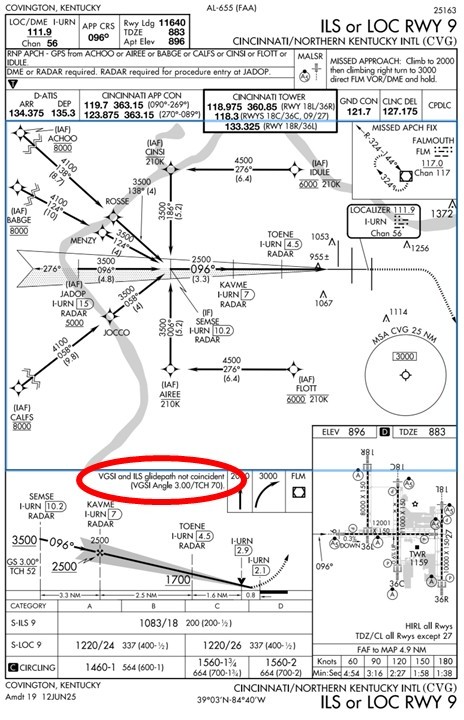Don’t Just Read the Notes—Use Them
|
Getting your Trinity Audio player ready...
|
Scenario
Picture this: you’re flying an ILS approach right down to the absolute minimums. At 200 feet above the ground, the only thing you can see are the approach lights flashing through the fog. You quickly run through FAR 91.175 in your head and remind yourself: yep, this means you’re allowed to keep going down to 100 feet above the touchdown zone.
As you pass through 100 feet AGL, the runway threshold and touchdown zone lights start to poke through the fog—just enough to line things up. You glance left to check the PAPI and, at the same time, keep an eye on your instruments. That’s when you notice something weird: the glideslope says you’re right on path, but the PAPI shows you’re just a little low.
So now you’ve got a decision to make:
• Do you trust the instruments and continue to land?
• Or do you play it safe and go around?

Hard IFR vs. the Checkride
This is where real-world IFR flying separates itself from the checkride. The ride feels almost scripted: constant vectors to final, the same familiar approaches, and airports you’ve probably flown into before, even in VFR. You usually know the terrain, the obstacles, and what to expect.
But out in the real world, you don’t always get that luxury. Sometimes you’re flying into an unfamiliar airport, with little margin for error, and the only thing that keeps you ahead of the airplane is a solid approach briefing. And that briefing really should start well before you even sit down in the cockpit.
Why the Notes Section Matters
One of the most overlooked parts of the approach plate is the notes section. A lot of pilots skim right past it, but that’s where some of the most important “gotchas” are hiding—the limitations, restrictions, and curveballs that could turn an otherwise normal approach into an unexpected go-around.
If you take just a little extra time to brief those notes, you’ll head into the approach with clear expectations, less confusion, and fewer last-second decisions when workload is already maxed out.
Turning Notes into Action One of the easiest examples is when you see:
One of the easiest examples is when you see:
“VGSI and ILS glidepath not coincident.”
I’ve heard plenty of pilots brief that by simply reading the words out loud, but that doesn’t really prepare you for what it means when you break out. A better way is to dig a little deeper. Compare the threshold crossing height (TCH) of the VGSI (like the PAPI or VASI) with the TCH listed for the ILS glideslope in the profile view.
Now you can brief it with actual meaning:
“The VGSI and ILS glidepath are not coincident. The glideslope TCH is 54 feet, while the VGSI is 70 feet. When we break out, I expect to see three red and one white on the PAPI if we’re on the ILS glidepath. If I see that, we continue. But if I see four reds, that’s an immediate go-around.”
The Payoff
See the difference? By briefing exactly what you expect to see, you’ve removed uncertainty from the picture. You know what’s normal, you know what’s not, and you know what action to take. That’s how you avoid hesitation in a high-stress, low-visibility moment. Instead of just reading a note, you’ve turned it into a practical risk management tool.
👉 Want a simple way to make your own approach briefings clear and organized? Check out this video where I walk through the ILS10R Approach into the Columbus International Airport (KCMH). Use it as a template the next time you fly IFR, and you’ll never look at the notes section the same way again.
- Don’t Just Read the Notes—Use Them - September 30, 2025
- Too Much Info: How to Focus IFR Thinking - August 12, 2025



this is what tend to be missed in real life and deterring what the minimums are for that approach.
Excellent article about paying attention to the details.
I wonder why the self-brief is “…glideslope TCH is 54 feet…” when the approach plate shows “GS TCH 52.”